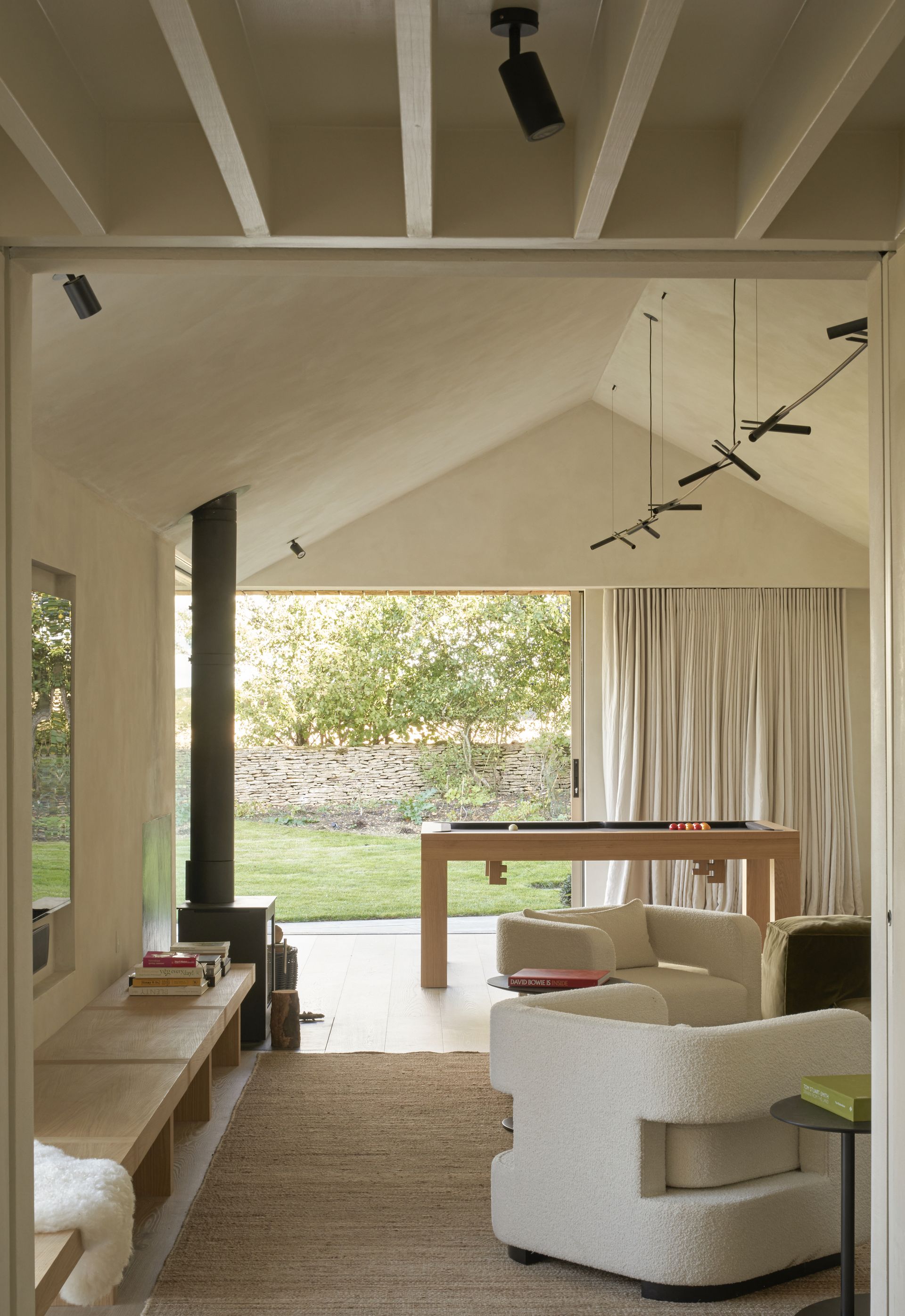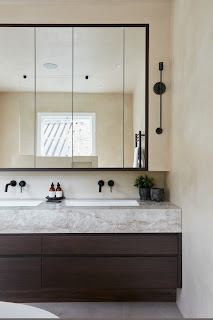Thursday, 21 September 2023
Tour an 18th-Century Townhouse Updated to Gain Light and Openness
Sunday, 17 September 2023
Art Deco Interior Design: Everything You Need to Know About This Style
While some may argue the era of Art Deco interior design is over, it’s undeniable that its spirit lives on.
When we’re talking about Art Deco, generally we’re thinking of the style and aesthetic most popular during the 1920s and ’30s, Often defined by geometric patterns and motifs, bold jewel tones, and rich material palettes, the interior design style is opulent and decadent.
These days, we probably wouldn’t do a whole authentic Art Deco interior, but we like to use bits and pieces, and use them in a contemporary setting.
Now we will let you know everything you need to know about Art Deco style, from its history to modern interpretations, and how you can bring the luxurious look into your home.
there are two ways to think about Art Deco design: the historical roots and the modern renditions. Of course, to appreciate the latter, you first have to understand the former.
History of Art Deco interior design
Historically, Art Deco, which is short for arts décoratifs, started in France in the early 1900s. “But it really flourished in America in the ’20s and ’30s,” Moon explains. Generally categorized as the style of art, interiors, architecture, and product design popular in the era between the First and Second World Wars, it didn’t get its name until 1925 during the Exposition Internationale des Arts Décoratifs et Industriels Modernes, which was held in Paris and was the first time the style was exhibited. Designs of this time were often defined by a streamlined look—generally composed of simple lines and geometric shapes for ornamentation—made from expensive materials. When we think of Art Deco, we picture symmetrical, geometric, streamlined pieces with simplistic form.
What is the difference between Art Deco and Art Nouveau?
While Art Deco and Art Nouveau were both extremely popular styles—and did feature some similar qualities—there are a few distinct differences. Generally, Art Nouveau was much more organic, often making use of more fluid, curved lines. Art Nouveau, though seen in architecture, is most prevalent in the decorative arts. It originated in the 1880s and often featured forms and motifs inspired by vines, flower stems, or other natural elements. Art Deco, on the other hand, made use of straighter, geometric, and more streamlined shapes.
Is Art Deco in style?
While Art Deco is not in style the same way it used to be, that doesn’t mean there is no longer merit or beauty to the aesthetic. Generally, architecture and design historians see the start of World War II as the end of the Art Deco period, though the look had been fading for some time. Designers from the Bauhaus school—which was forced to close in 1933 under Hitler’s rule—migrated to other parts of the world, including the United States, bringing with them new ideas focused on simple, functional design. After the war, aesthetic values slowly started to change, switching to a utilitarian, unornamented standard and ushering in the era of international and midcentury-modern styles pioneered by visionaries like Le Corbusier and Mies van der Rohe. Following the Great Depression, many of the original principles of Art Deco—like rich materials and opulent ornamentation—were no longer affordable and, in some situations, no longer desirable.
Modern interpretations of Art Deco
However, like most interior design trends, tastes and principles are cyclical, and nothing is ever truly over. These days, it’s not overly common to see true-to-the-era replicated versions of Art Deco interiors. Instead, many modern designers opt for capturing the spirit of the Art Deco period by borrowing elements and embodying the principles of the movement. A lot of people have said my apartment is very Art Deco, although we can't say particularly it is an Art Deco apartment, but it does have a lot of those qualities.
Defining elements and characteristics of Art Deco interior design
For anyone looking to create a modern Art Deco look today, it’s best to understand the classic Deco elements in order to most appropriately reimagine them in a modern way.
- Streamlined, symmetrical forms
- Geometric designs as ornamentation; it’s common to see shapes such as:
- Trapezoids
- Triangles
- Zigzags
- Chevrons
- Sunbursts
- Rich material and textile palettes, including:
- Lacquered surfaces
- Brass
- Stainless steel
- Gilt
- High-end upholstery fabrics
- Ornamental light fixtures such as chandeliers or sconces
How to achieve Art Deco interiors in your house
I think Art Deco is always in style, I think you just use bits and pieces.” When it comes to your home design, you don’t have to live in a perfect replica of the Great Gatsby mansion to channel the romance of the Art Deco era; instead, it’s all about embracing the more luxurious, bolder parts of life.
Artcle by Katherine McLaughlin
For more interior design trends & inspirations you Can find us on :
Instagram page: https://instagram.com/gabiliohome
Blog page: https://gabiliohome.blogspot.com
Online store: https://gabiliohome.com
Facebook page: https://www.facebook.com/gabiliohome
TikTok account: https://www.tiktok.com/@gabiliohome
Whatsapp: https://wa.me/c/201012023252
YouTube Channel: https://youtube.com/@gabiliohome
Saturday, 16 September 2023
7 things the most organized people have in their living rooms
Wednesday, 13 September 2023
5 rules that minimalist interior designers swear by to create a cozy living room
 |
| (Image credit: Nune) |
Minimalist spaces shouldn't mean stark or severe. These are the 5 rules minimalist designers swear by for cozy living rooms :
1. EMBRACE TEXTURE
 |
| (Image credit: Edmund Sumner. Design: TR Studios) |
Rule number one of adopting a cozy minimalist feel to your living room all comes down to texture. Minimalists typically keep color to a minimum, relying instead on material to bring interest. Textures play a pivotal role in bringing depth and warmth to the otherwise clean and sleek aesthetics of minimalism.
To create a cozy atmosphere in minimalist living rooms, it's crucial to focus on warm shades and layering textures.
It will be better to use similar shades in both paint and fabric, but introduce different textures that add layers and complexity, Additionally, you might incorporate wood elements as they not only infuse warmth but also provide another dimension of texture.
When shopping for texture, think natural. From jute rugs to wicker lampshades, to boucle armchairs to high pile upholstery and mohair throws, building up a layered scheme of texture can bring coziness to your living room in abundance. The trick with minimalism is to keep a cohesive color palette. If your minimalist living room uses white on the walls, build dimension with a neutral, earth tone living room.
2. USE LIGHTING TO YOUR ADVANTAGE

Ensuring you have the right lighting is essential for cozy minimalist living rooms, with a focus on mood lighting to add warmth.
Brightening up your home and flooding the space with a natural feel, natural light should be harnessed where possible, helping you to embrace the great outdoors in your interiors. Encourage natural light during the design stage of your home with floor-to-ceiling windows, skylights and window seat ideas that offer a space to sit and enjoy the view of the outdoors. It's all about the balance of natural and artificial lighting though, so remember to supplement with your lamps, wall lights and ceiling lights.
3. BRING THE SPACE TOGETHER WITH A HIGH PILE AREA RUG
 |
| Image credit: Nune |
4. DON'T UNDERESTIMATE THE IMPORTANCE OF WINDOW TREATMENTS
Given that light is such an important tool in minimalist interior design, the way we control and block out light in our minimalist living rooms is also of crucial importance. Diffuse the natural light that comes into your room with soft, sheer floor-length living room curtains that bring a beautiful softness to the walls and allow an ethereal quality of light. Remember to keep the color scheme neutral or white, avoid bright or bold color and allow the light that filters through to be the star of the show.
Minimalism is so much more than just white interiors, and more and more, as minimalism blends with a more luxurious look, we're noticing designers experimenting with other richer and earthy tones.
For your minimalist living room to work come fall, it's all about introducing other colors that have a natural warmth to them. For minimalism, avoid anything too saturated, but introduce earthy, subtle tones. You can use mushroom in a minimalist living room, bringing a brown tinge to grey, and tones of brown from across the spectrum. Avoid anything that carries too much color and energy.
Saturday, 9 September 2023
The Amber Room
A Brief History of the Amber Room
Dubbed the “Eighth Wonder of the World,”
.jpg) |
| The Amber Room in the Catherine Palace, 1917 |
The Amber Room was intended in 1701 for the Charlottenburg Palace, in Berlin, Prussia, but was eventually installed at the Berlin City Palace. It was designed by German baroque sculptor Andreas Schlüter and Danish amber craftsman Gottfried Wolfram. Schlüter and Wolfram worked on the room until 1707, when work was continued by amber masters Gottfried Turau and Ernst Schacht from Danzig (Gdańsk).
It remained in Berlin until 1716, when it was given by the Prussian King Frederick William I to his ally Tsar Peter the Great of the Russian Empire. In Russia, the room was installed in the Catherine Palace. After expansion and several renovations, it covered more than 55 square metres (590 sq ft) and contained over 6 tonnes (13,000 lb) of amber.
.jpg) |
| Hand-coloured photograph of the original Amber Room, 1931 |
 |
| An angel statue featured on the wall |































